-
Doctors
-
Specialities & Treatments
Centre of Excellence
Specialties
Treatments and Procedures
Hospitals & Directions HyderabadCARE Hospitals, Banjara Hills CARE Outpatient Centre, Banjara Hills CARE Hospitals, HITEC City CARE Hospitals, Nampally Gurunanak CARE Hospitals, Musheerabad CARE Hospitals Outpatient Centre, HITEC City CARE Hospitals, Malakpet
HyderabadCARE Hospitals, Banjara Hills CARE Outpatient Centre, Banjara Hills CARE Hospitals, HITEC City CARE Hospitals, Nampally Gurunanak CARE Hospitals, Musheerabad CARE Hospitals Outpatient Centre, HITEC City CARE Hospitals, Malakpet Raipur
Raipur
 Bhubaneswar
Bhubaneswar Visakhapatnam
Visakhapatnam
 Nagpur
Nagpur
 Indore
Indore
 Chh. Sambhajinagar
Chh. SambhajinagarClinics & Medical Centers
Book an AppointmentContact Us
Online Lab Reports
Book an Appointment
Consult Super-Specialist Doctors at CARE Hospitals

Coronary Artery Bypass Grafting
Coronary Artery Bypass Grafting
Coronary Artery Bypass Garft ( CABG ) Surgery in Hyderabad, India
Best Hospital for CABG Surgical Procedures in Hyderbad, India
The coronary artery bypass graft is a major surgical procedure. The team of the best doctors, surgeons, nurses, and other healthcare staff at CARE Hospitals do our best to treat heart-related issues with medications, lifestyle changes, or nonsurgical procedures before opting for surgery from the CABG Surgery Hospital in Hyderabad.
We opt for surgery to address problems such as plaque buildup (responsible for blocking blood flow totally or partially in a coronary artery), heart failure, diseased or dilated blood vessels (for instance aorta), faulty heart valves, and abnormal heart rhythms.

With the CABG procedure, CARE Hospitals’ team diverts blood around clogged or narrowed parts within the major arteries for improving the flow of oxygen supply and blood to the heart.
CABG (coronary artery bypass graft surgery) is a process that involves treating CAD (Coronary artery disease). CAB narrows the coronary arteries which means it clogs blood vessels that are responsible for supplying nutrients and oxygen to the heart muscle. Further, it shortens the rich-oxygen blood supply to the heart. Here, we embrace CABG to correct this problem.
Diagnosis of CABG at CARE Hospitals
Doctors at CARE Hospitals opt for advanced procedures for the diagnosis of CAD before going for CABG surgery. Our doctors perform both blood tests and physical examinations if required and they also recommend tests like a cardiac nuclear scan, exercise stress test, and cardiac catheterization before proceeding towards performing the CABG surgery in Hyderabad. With catheterization, our doctors are able to know the disease severity as it indicates which artery is affected. This test is crucial to decide whether a person requires bypass surgery or not.
Prevention and Treatment opted by CARE Hospitals team
CABG is an open-heart procedure - After performing all the required tests, doctors at CARE Hospitals place the patient under general anaesthetic. The surgeon starts the operation by conducting an incision down at the central area of the chest.
It separates and divides the sternum (breastbone). Following this, tube association is done with the heart and these are also connected to the heart-lung machine which keeps the flow and supply of blood with oxygen good. Pumping of blood is done from the heart to a machine and further, it is backed to the body for circulation. Temperature, blood pressure, and breathing are regulated consistently. Sometimes, smaller incisions are done in the chest to avoid cutting of the breastbone.
Aorta clamping by CARE Hospitals surgeons - Once taking over is done by the heart-lung machine for the heart, clamping of the aorta is done by the surgeons (here a major artery circulates blood from the heart to all over the body). Further, the team sews or grafts an artery or vein from another body part to the coronary artery that is blocked. The grafted arteries or veins connect the aorta to the coronary arteries.
Next, these bypass the clogged coronary arteries for bringing blood to the heart which is oxygen-rich. The vein or artery that is used for grafting is generally fetched from the saphenous vein (it is in the leg). In this process, at least one artery or vein is often used as a graft. Usually, it is an internal mammary artery that is fetched from the right or left side of the wall of the chest (under the breastbone).
The surgeons sew the mammary artery straight to the clogged coronary artery. In a few cases, doctors also use a mammary artery from the forearm or other portion of the side. Those arteries or veins are used that are not harmful to be removed and they are not essential in the original location.
After finishing the grafting and removing the heart-lung machine, the lungs and heart take over again, and a surgeon reconnects the breastbone along with wires of stainless steel. In a single operation, one to six bypasses might be performed.
CARE Hospitals are also laced with new techniques - In some cases, new techniques are required and we are fully equipped. For example, the beating-heart technique. This technique does not require a heart-lung machine but is also performed via a middle chest incision. Sewing of bypasses is performed directly on the heart without stopping it. This process is adopted by our surgeon when a patient has a risk of heart-lung machine complications.
Good observation and care - After the CABG process at CARE Hospitals, the patients remain in the intensive care unit with deep monitoring for around 24 hours. At the completion of two or three days, most of the patients are allowed to take solid foods and they are discharged from the hospital within five to seven days. Once a week is completed, they are called for the removal of stitches.
Crucial Lifestyle Changes Suggested by CARE Hospitals
Coronary artery bypass graft (CABG) surgery boosts the blood flow to your heart but it is not a cure for coronary artery disease. This is crucial to follow the medication regimen as prescribed by the doctor from the best CABG hospital in Hyderabad. In addition, we also suggest some useful lifestyle changes that keep you at low risk of future heart issues. These changes comprise:
-
Maintain cholesterol
-
Stay away from smoking
-
Keep a check on diabetes and high blood pressure
-
Control weight gain and manage a healthy weight
-
Always a heart-friendly diet
-
Be a part of a heart rehabilitation program
-
Control anger and stress
-
Take all medicines as prescribed
-
Make follow-up visits to see your doctor regularly
Why is CARE Hospitals the right option for CABG Surgery?
CARE Hospitals are known for offering international standard treatment procedures with well-trained staff. Our focus is on minimal invasive processes for the patients, reduces cabg cost and ensures shorter hospital stays with fast recovery.
Our Doctors
-

Dr. Attada Prudhvi Raj
MBBS, MD, DNB
Cardiology
View More -

Dr. Manish Porwal
MBBS, MS, MCH
Cardiac Surgery
View More -

Dr. A. S. V. Narayana Rao
MBBS, MD (General Medicine), DM (Cardiology), FICC, FESC
Cardiology
View More -

Dr. Alluri Raja Gopala Raju
MBBS, MD, DM, FICA
Cardiology
View More -

Dr. Alluri Srinivas Raju
MBBS, MD, DNB
Cardiology
View More -

Dr. Aman Salwan
MBBS, MD, DNB Cardiology, FICS (Singapore), FACC, FESE
Cardiology
View More -

Dr. Amey Beedkar
MBBS, MD (Medicine), DM (Cardiology)
Cardiology
View More -

Dr. Aminuddin Ahmeduddin Owaisi
MBBS, MD, DM
Cardiology
View More -

Dr. Anand Deodhar
MBBS, MS (General Surgery), MS (Cardiothoracic Surgery), FRCS, Mch, PGDHAM
Cardiac Surgery
View More -

Dr. Ashish Mishra
MBBS, MD, DNB (Cardiology), FACC
Cardiology
View More -

Dr. Ashutosh Kumar
MD (BHU), DM (PGI), FACC (USA), FHRS (USA), FESC (EURO), FSCAI (USA), PDCC (EP), CCDS (IBHRE, USA), CEPS (IBHRE, USA)
Cardiology
View More -

Dr. Beeku Naik Ds
MBBS (JIPMER), MD, DNB (Cardiology), FSCAI
Cardiology
View More -

Dr. Bharat Agrawal
MBBS, DNB (MED), DNB (Cardiology)
Cardiology
View More -

Dr. Bikram Keshari Mohapatra
MBBS, MD (Medicine), DM (Cardiology)
Cardiology
View More -

Dr. Bipin Bihari Mohanty
MBBS, MS, MCh, FIACS, FACC, FRSM
Cardiac Surgery
View More -

Dr. C. V. Rao
MBBS, MD (General Medicine), DM (Cardiology)
Cardiology
View More -

Dr. Chanakya Kishore Kammaripalli
MBBS, MD, DM (Cardiology) (AIIMS), FACC, FSCAI
Cardiology
View More -

Dr. Debasish Mohapatra
MBBS, MD (General Medicine), DM (Cardiology)
Cardiology
View More -

Dr. G Rama Subramanyam
MBBS, MS, MCh (Cardiothoracic Surgery)
Cardiac Surgery
View More -

Dr. G. Usha Rani
MS, MCh
Cardiac Surgery
View More -

Dr. G.S.R.MURTHY
MBBS, MD (General Medicine), DM (Cardiology)
Cardiology
View More -

Dr. Gandhamdara Kiran Kumar
MBBS, MD (Paediatrics), DM (Cardiology), FSCAI
Cardiology
View More -

Dr. Ganesh Sapkal
MBBS, DM (Cardiology)
Cardiology
View More -
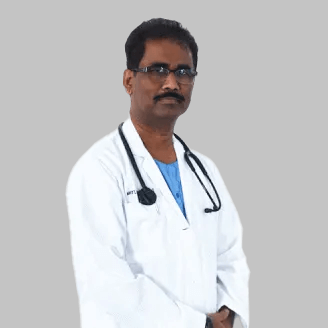
Dr. Giridhari Jena
MBBS, MD, DM (Cardiology)
Cardiology
View More -

Dr. Gulla Surya Prakash
MBBS, MD (AIMS), DM, FSCAI, FACC (USA), FESC (EUR), MBA (Hospital Administration)
Cardiology
View More -

Dr. Indira Panda
MBBS, PGDCC, CCCS, CCEBDM
Cardiology
View More -

Dr. Johann Christopher
MBBS, MD, DNB, FACC, FICS
Cardiology
View More -

Dr. K.V.S.S.R. Abhilash
MBBS, MD, (DNB)
Cardiology
View More -

Dr. Kanhu Charan Mishra
MBBS, MD, DM (Cardiology)
Cardiology
View More -

Dr. Kavitha Chintala
MBBS, MD, FAAP, FACC, FASE
Paediatric Cardiology
View More -

Dr. L. Vijay
DNB (General Surgery), DNB - CTVS (Gold Medalist)
Cardiac Surgery, Paediatric Cardiac Surgery
View More -

Dr. Lalith Agarwal
MBBS, DNB (Internal Medicine), DNB (Cardiology)
Cardiology
View More -

Dr. Lalitha Ravinuthala
MBBS,MD,DM
Cardiology
View More -

Dr. Lalukota Krishna Mohan
MBBS, MRCP (UK), FRCP (London)
Cardiology
View More -

Dr. M Sanjeeva Rao
MBBS, MS, MCh (AIIMS)
Cardiac Surgery
View More -
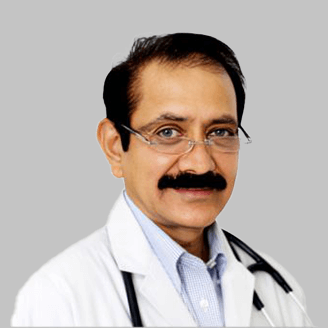
Dr. M Srinivasa Rao
MD, DM (Cardiology), FACC (USA), FESC, FSCAI (USA)
Cardiology
View More -

Dr. Mahendra Prasad Tripathy
MBBS, MD, DM (Cardiology)
Cardiology
View More -

Dr. Manoranjan Misra
MBBS, MS, MCh (CTVS)
Cardiac Surgery
View More -

Dr. Milind Kharche
MD. DM (Cardiology ) Fellow of American College of Cardiology (FACC), Fellow of European Society of Cardiology (FESC)
Cardiology, Paediatric Cardiology
View More -

Dr. Nagireddi Nageswara Rao
MBBS, MS, MCh (CTVS), FIACS
Cardiac Surgery
View More -

Dr. Narasa Raju Kavalipati
MBBS, MD (General Medicine), DM (AIIMS New Delhi), FACC
Cardiology
View More -

Dr. Naveen Kumar Cheruku
MBBS, DNB, DM, FESC, FSCAI (USA)
Cardiology
View More -

Dr. P Krishnam Raju
MBBS, MD, DM
Cardiology
View More -

Dr. P L N Kapardhi
MBBS, MD, DM (PGIMER), FACC, FSCAI, FESC, FICC
Cardiology
View More -

Dr. P.V.V.N.M.KUMAR
MBBS, DM (Cardiology), MD (Paediatrics)
Cardiology, Pediatric Cardiology
View More -
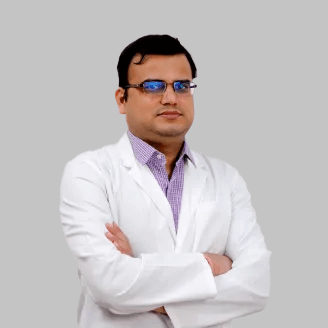
Dr. Panduranga
MBBS, MD (Internal Medicine), DM (Cardiology)
Cardiology
View More -

Dr. Pathakota Sudhakar Reddy
MBBS, MD, DM
Cardiology
View More -

Dr. Priyen Kantilal Shah
MBBS, MD (Card, UKR), FCCP
Cardiology
View More -
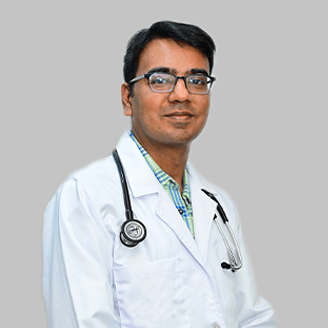
Dr. Puneet Goyal
DM (Cardiology)
Cardiology
View More -

Dr. Rakesh Dubba
MD, DM, PDF
Cardiology
View More -

Dr. Ramakrishna SVK
MBBS, MD, DM, CEPS, CCDS (USA), FACC, FESC, FSCAI
Cardiology
View More -

Dr. Ravi Raju
MD, FC, FACC
Cardiology
View More -

Dr. Ravi Raju Chigullapally
MBBS, DNB (CTVS), FIACS, Fellowship (UK)
Cardiac Surgery
View More -

Dr. Reetu Mishra
MBBS, PGDCC, PG Diploma (Clinical Diabetes)
Cardiology
View More -

Dr. Revanth Maramreddy
MS, MCh
Cardiac Surgery
View More -

Dr. Revanur Vishwanath
MBBS, MRCP, FSCAI
Cardiology
View More -

Dr. Sadath Ahmed
MBBS, DrNB (CTVS)
Cardiac Surgery, Vascular Surgery
View More -

Dr. Sailaja Vasireddy
MBBS, DrNB (CTVS)
Cardiac Surgery, Vascular Surgery
View More -
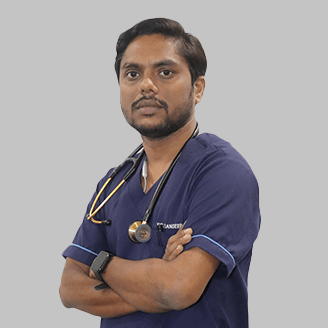
Dr. Sandeep Mohanty
MBBS, PGDCC, PG Diploma (Clinical Diabetes)
Cardiology
View More -

Dr. Shravan Kumar Ch
MBBS, DNB, DM
Cardiology
View More -

Dr. Sudheer Gandrakota
MBBS, DNB, CTVS
Cardiac Surgery, Vascular Surgery
View More -

Dr. Sujata Patil
MBBS, DCH, DNB (Paediatrics), FNB (Paediatric Cardiology)
Paediatric Cardiology
View More -

Dr. Sujit Kumar Tripathy
MBBS, MD (General Medicine), DM (Cardiology)
Cardiology
View More -

Dr. Surya Prakasa Rao Vithala
MBBS, MD, DM, FACC, FSCAI, FCSI, FICC
Cardiology
View More -

Dr. Suvakanta Biswal
MBBS, MS (Gen. Sur), MCh (CTVS)
Cardiac Surgery
View More -

Dr. Tanmay Kumar Das
MBBS, MD (Gen Medicine), DM (Cardiology)
Cardiology
View More -

Dr. Tapan Kumar Dash
MBBS, MS, FPCS (USA)
Paediatric Cardiac Surgery
View More -

Dr. Umesh Khedkar
MBBS, MD (General Medicine), DM (Cardiology)
Cardiology
View More -

Dr. V. Vinoth kumar
MBBS, MD, DM (Cardiology)
Cardiology
View More -

Dr. Varun Bhargava
MD, PGIMER
Cardiology
View More -

Dr. Vinod Ahuja
MBBS, MS, MCh
Cardiac Surgery
View More -

Dr. Vipul Seta
MBBS, MD (MED), DNB(Cardiology)
Cardiology
View More
Frequently Asked Questions
Still Have a Question?

